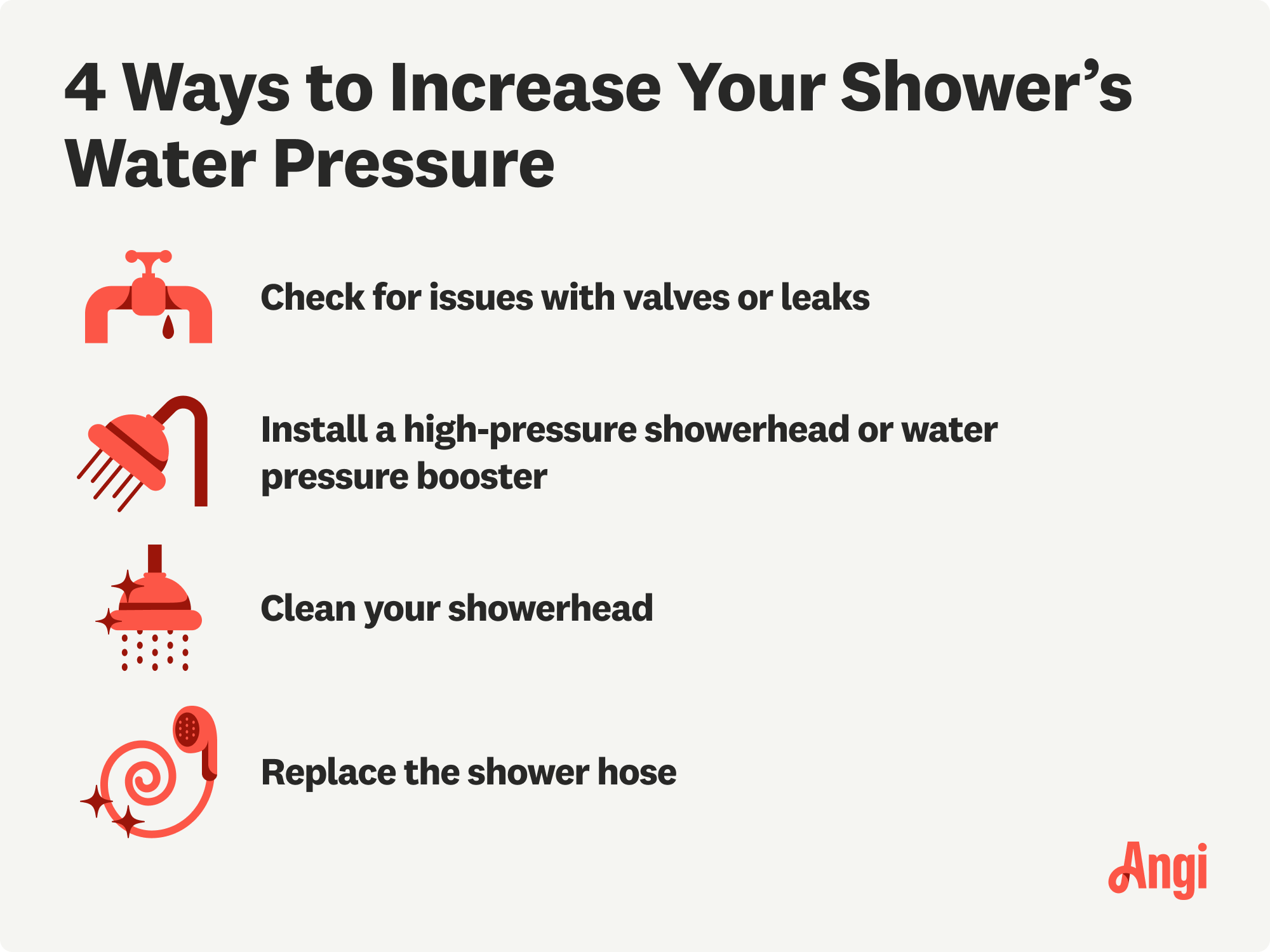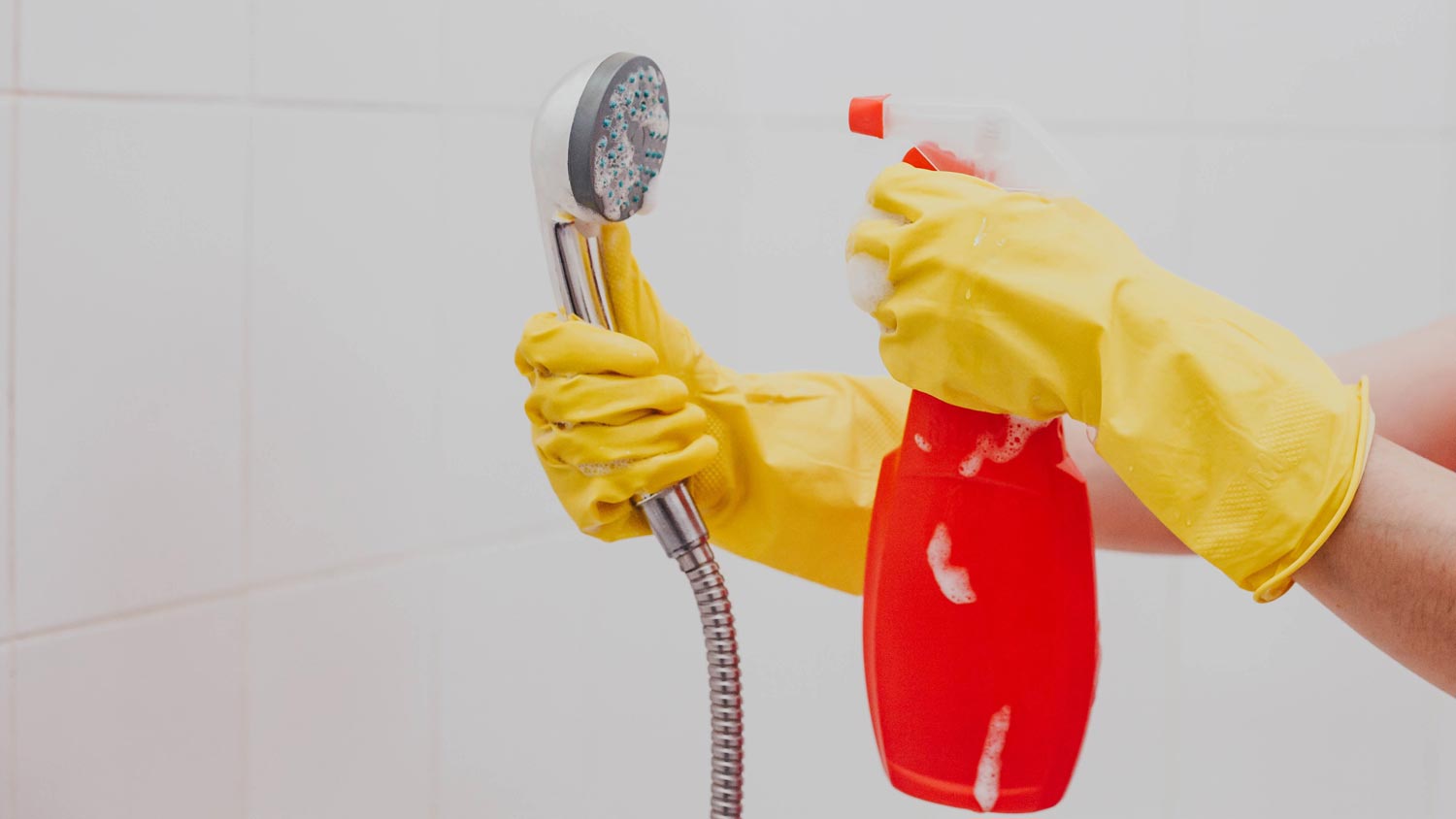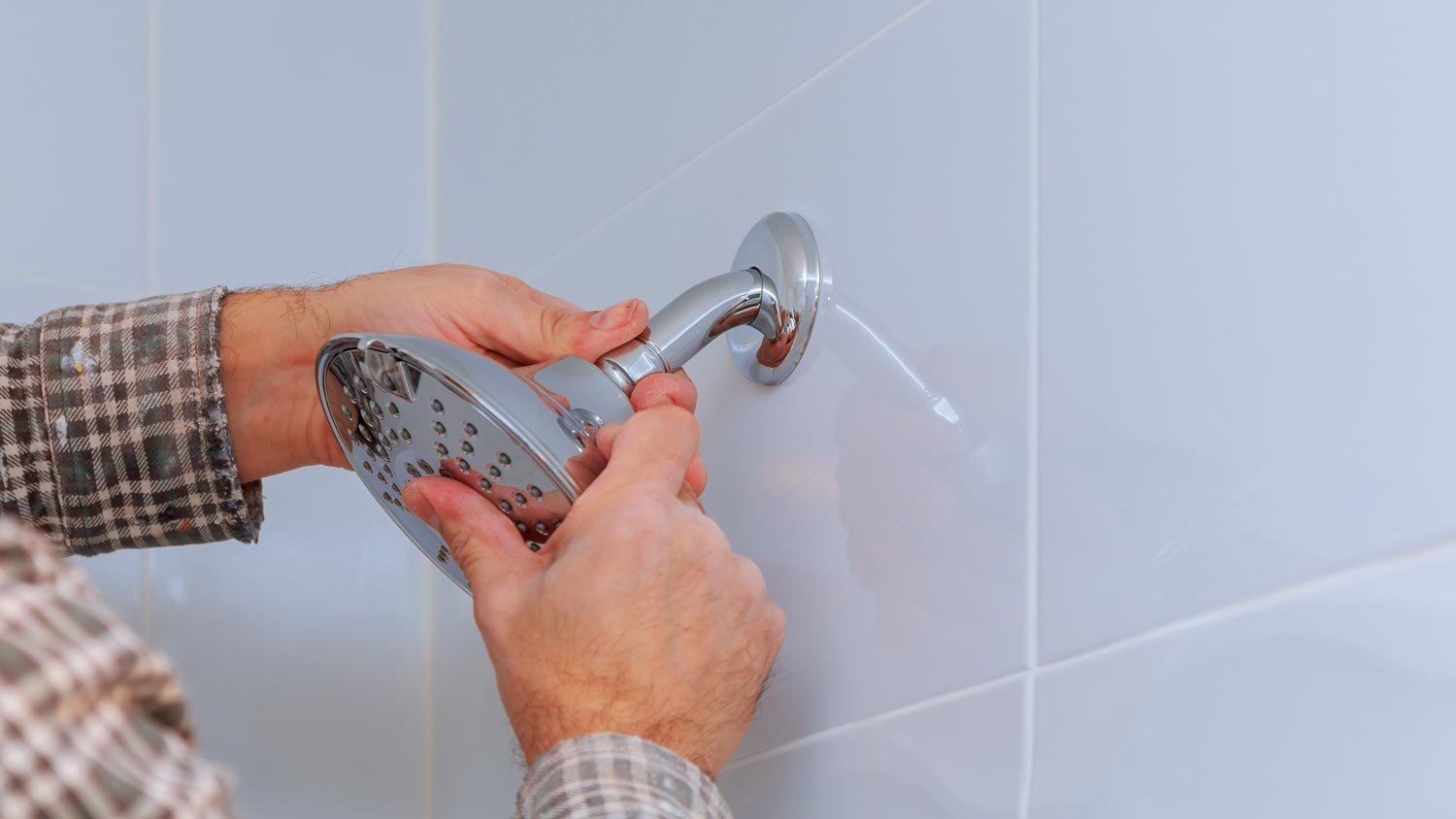
A leaky faucet can lead to costly water damage and a lot of wasted water. Learn how much it costs to fix a leaky faucet based on type, part and labor.
You've got a hot shower—let's make sure there's enough pressure


While some of the fixes below are DIY-friendly, like cleaning the showerhead, others, like installing a new shower pump, require plumbing expertise.
Plumbers charge $45 to $200 per hour for a service call, but they can work through every possible issue that could be causing your low water pressure.
Undetected leaks can cause low water pressure. A professional plumber has the skills to locate and fix leaks caused by issues like aging galvanized pipes.
Many people look forward to taking a nice, hot shower first thing in the morning or at the end of a long day. But it’s not only hot water that makes a shower great—you also need ample water pressure.
If your water pressure is low, it can dampen the experience and even make it unpleasant. From checking the common culprits to fixing any issues, there’s a good chance you can take care of your problem with a DIY fix or with the help of a local plumber.
Having a shower with low water pressure can be a bit of a downer, especially if you recently invested in a new bathroom remodel. There are a few potential reasons for low water pressure, ranging from a simple fix like a low-flow showerhead that needs replacing to something complex like old pipes with leaks and corrosion.
Other culprits can include a clogged showerhead, a valve that was closed by accident, a faulty shower mixing valve, or a failing water pressure regulator. The mixing valve is responsible for blending the hot and cold water, while the water pressure regulator helps you set the water pressure for the home. If either is failing, you’ll experience low water pressure in your shower.
A shower valve is a piece of plumbing behind the shower wall. It allows you to change the water temperature and control the water flow. Shower valves are also responsible for mixing hot and cold water and maintaining water pressure.
Finally, if you notice that your water pressure is only affected when using hot water, there could be an issue with your water heater.
To confirm that you’re dealing with low water pressure, you can use a water gauge and make sure that it’s between 40 and 60 PSI. Otherwise, you can place a 1-liter container under the showerhead. Turn the water on, and use a stopwatch to see how long it takes for the water to fill the container. You have low water pressure if it takes longer than six seconds.

If you’ve gotten tired of the slow dripping from your showerhead, there are many ways to get to the bottom of the problem. It might be a simple fix, or you might be looking at a big plumbing project.
A good way to troubleshoot the low water pressure is by checking the water valves and ensuring they’re fully open. If your whole house has low water pressure, start with the main water supply valve, and then work your way to your shower’s cold and hot water valves.
While checking on the main water supply valve, look for a water pressure regulator. It looks like a cone. You should turn it clockwise to allow more water to flow.

Cleaning your showerhead is a surefire way to help the water pressure, especially if there's visible sediment build-up on it.
If you can remove the showerhead, it’ll be easier to clean. Clean this tricky spot by scrubbing the outside and inside with a toothbrush, and clean the rubber or silicone nozzle. Soak the showerhead in vinegar if you have stubborn build-up because it will loosen any sediment or lime scaling.
If you can’t remove your showerhead, you can still clean the unit by filling a bag with vinegar. You can tape the bag to the showerhead and let it soak for several hours.
Changing your showerhead is an easy bathroom upgrade, plus it will likely solve your water pressure problem. If you don’t have any plumbing issues in your home, a high-pressure showerhead can provide the solution you need.
However, be aware that higher pressure means more water usage, which could increase the cost of your water bill. If you opt for a luxury showerhead, you may need to install a new shower pump for it to function correctly.
If your shower hose is old and outdated, then installing a new one might help resolve your water pressure issue. Over time, sediment can settle in the hose, causing clogs and water slowdowns.
You can expect to pay $5 to $15 for a replacement shower hose, and it’s relatively easy to install the new one yourself. Start by disconnecting the current hose from the showerhead, with towels underneath it to catch any water that drips out. Then, disconnect the hose from the shower or wall outlet, and fit the new hose in its place.

If leaks are hiding anywhere in your home’s plumbing system, you’re likely to suffer from low water pressure.
In particular, if you live in an older home with plumbing issues, it may have galvanized pipes. These are no longer used in new construction homes because corrosion and rust from galvanized pipes can cause leaks, blockages, and the rust can leach into the water supply. In these instances, it’s best if you replace all of the pipes, not just to avoid leaks but also for your health and wellness.
Check for leaks on the water supply line to the shower, and also check for leaks on the main water supply.
If the water pressure problem is not due to leaks or a bad showerhead, the best option may be to install a new shower pump. Shower pumps increase the water pressure so you can enjoy powerful streams of water in the shower.
Since replacing your shower pump involves removing electrical wires and water connections, we recommend hiring a professional plumber near you to handle this project.
If you’re wondering how a water pressure booster works, it’s surprisingly simple. The pump pushes the water through the pipes faster using spinning propellers or oscillating diaphragms. The booster connects to the main water line and can increase your pressure by as much as 70 pounds. Before investing in a water pressure booster, you should rule out all other common plumbing problems to ensure it’s the right solution for your home.

You can take many steps to prevent low water pressure issues in your shower. An essential step is to clean your showerhead once a month. It'll not only help with your water pressure, but it’s also healthier for you. A regular cleaning schedule means you’ll never have a buildup of sediment, bacteria, or mold in your shower.
Secondly, you should have a pro complete a plumbing inspection every two years. Scheduling a regular inspection means that your plumber will catch any small problems before they become major issues, and you can be sure that your home is free of leaks.
When troubleshooting your shower’s water pressure, it’s best to start with the DIY options that allow you to fix it easily and quickly. However, if you’ve exhausted all the DIY options and still haven’t figured out the root cause, you may be better off hiring a plumber.
Some solutions are best left to a professional, including installing a shower pump or a water pressure booster. Unless you have plumbing experience, it’s best to bring in a pro to get the job done right. Keep in mind that a qualified plumber will typically charge $45 to $200 per hour or more, depending on the size and scale of the project.
From average costs to expert advice, get all the answers you need to get your job done.

A leaky faucet can lead to costly water damage and a lot of wasted water. Learn how much it costs to fix a leaky faucet based on type, part and labor.

Worried about water leaking around your toilet? You may have a faulty toilet flange. Learn more about the cost to replace a toilet flange in our guide.

Pipe leak repair costs depend on the location and severity of the leak, as well as the type of pipe being replaced. Use our guide to price out repair work.

If your faucet hasn’t been working like it used to, you might need a replacement. Here’s how to replace a kitchen faucet like a plumbing pro.

If your toilet is leaking at the base, it can be a cause for concern. So grab some towels to stop the flow and explore these six common culprits for a leaky base.

Learn how to cut PEX pipes if you need to replace copper or galvanized steel pipes due to leaking, corrosion, or rust. Cutting PEX pipe only requires a few simple tools.